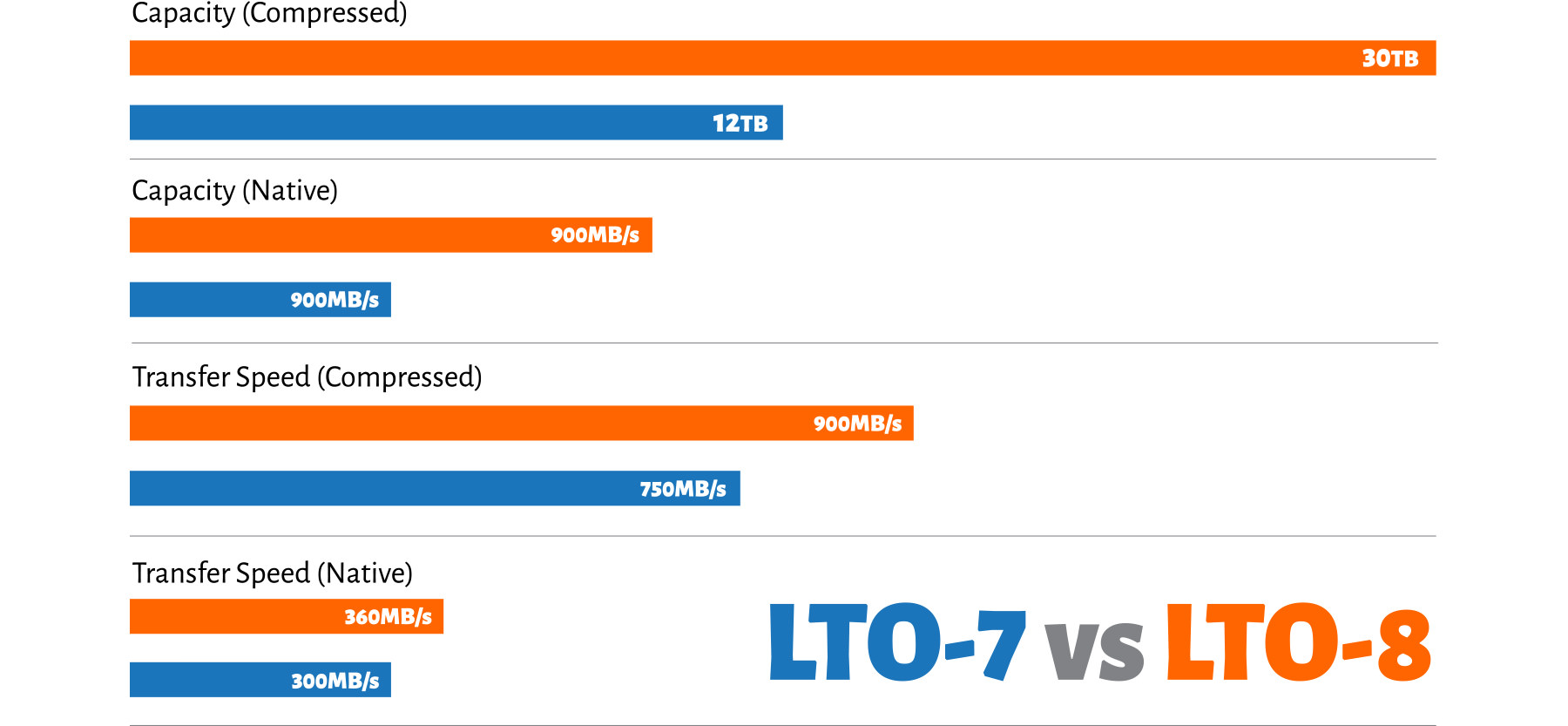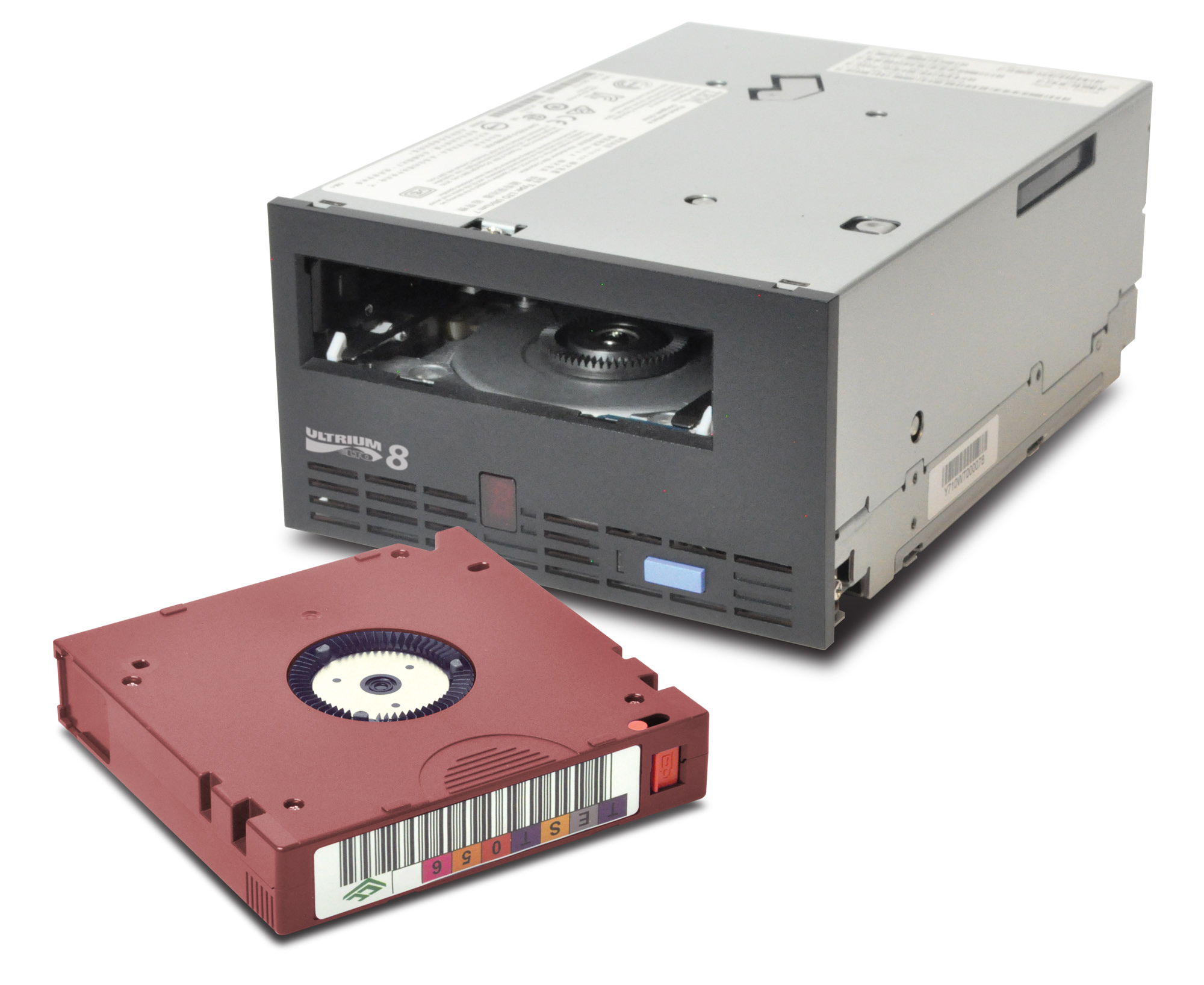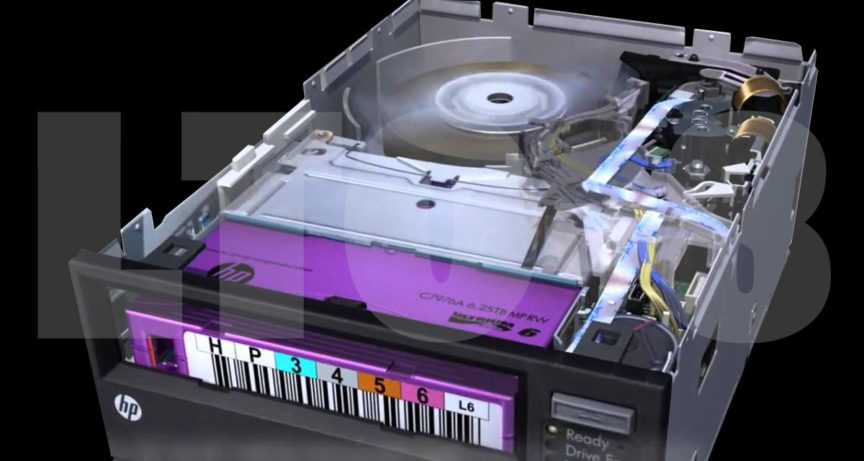
As promised in the LTO roadmap, the next generation of LTO, LTO-8 was released late last year. If you’re not completely familiar with LTO, check out our Pros and Cons of LTO article published several months ago.
Just to sum up, LTO (Linear Tape-Open) is a tape storage system consisting of the tape cartridges and the LTO drive. It is ideal for data-intensive industries such as media and entertainment, video surveillance, scientific research, healthcare, financial, and government organizations.
While the initial costs of the drives are higher than HDD and SSD, LTO tape technology continues to be the lowest cost per gigabyte data storage technology on the market.
What Does the Arrival of LTO-8 Mean?
Mostly, it means more space. The previous generation, LTO-7 (duh), has a native storage capacity of 6TB and a compressed data capacity of 15TB. Pretty impressive, until little sister came along to put that capacity to shame.
By way of comparison, LTO-8 offers 12TB of native storage capacity and a whopping 30TB compressed storage capacity. Yeah, literally double the capacity over the previous generation.

There’s also a little bit of a speed bump. Native transfer rate goes from 300MB/s up to 360MB/s. The compressed transfer rate goes from 700MB/s up to 900MB/s. It’s not going to change your life but any increase in speed is a plus.
What Else Does It Mean?
It means if you’re an early LTO adopter, you’re going to have to shell out a chunk of change on a new drive since the main magic is in the drive even more than the media.
But, the media does matter. You do need LTO-8 tape cartridges to get the full capacity and speed benefit. But, if you still have your Costco-sized box of LTO-7 cartridges, you can format them in an LTO-8 drive to get 9TB native and 22.5TB compressed storage capacity.
Interestingly enough, while previous LTO generations are backwards compatible reading data 2 generations back, LTO-8 is only backwards compatible to LTO-7. The caveat is that it can read and write LTO-7.
The good news is that the LTO-8 cartridges are roughly the same price as the lower capacity of the previous generation. This cuts the already low cost-per-gigabyte in half.

The LTO-8 Drive
This is probably the best time to invest in LTO-8 unless you just bought an LTO-7 drive. Then just let it ride. But, if you’re new to tape archiving or have been using LTO-5 or 6, there is no better time since the technology will be relevant for the next 5-10 years.
The good news for those looking to get started or upgrade is that the drives are also similar in price to the LTO-7 drives. Sure, now that LTO-8 is out, you can get some deals and save up to $1000 on table-top models. But, shelling out the $3000 (vs $2000) will pay off in the long run since it looks like LTO is only going to be backwards-compatible for one generation.
Falling in Love With Tape
We don’t usually hear people say they ‘love tape.’ However, we’re starting to see an increasing number of IT departments maintaining tape or adding it to the storage infrastructure. LTO media sales have increased 5% year-over-year according to the LTO Tape Consortium (not to be confused with Spectre)
Why are people falling head-over-heels in love with tape? Here are just a few reasons:
- Tape protects your backups from ransomware – the only truly offline copy of your data that’s 100% safe.
- Tape allows you to maintain complete control of your data on-site.
- Tape technology has come a long way with LTO-8 tape density at 30 TB of compressed data.
- Depending on recovery needs and amount of data, tape can save you considerable $$ over cloud storage.
If you are in a high-volume data industry, like video production and entertainment, LTO-8 is easily the most cost-effective way for you to archive your data. At ProStorage we recognized the benefits of LTO so we continue to support the needs of professionals using LTO with our new line of inserts design to fit in Pelican 1510 cases for easy transport and secure protection. Check it out here.
